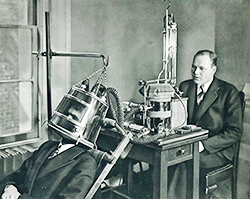 Hello Class of 2016-17 and welcome to educational technology!
Hello Class of 2016-17 and welcome to educational technology!
Who is this course for?
This course was created specifically for students enrolled in the Secondary MAT program at the University of Alaska Southeast during the 2016-17 school year.
Course rationale
This course has been created for the students of the Secondary MAT program to support them in their journey in becoming teachers. It is expected that they do not want to be educational technology specialists at this point in their careers, but rather want to use technology to support their teaching efforts in their content area. Toward that end, this course will explore the role that technology plays in teaching and learning, both in general terms and as it relates to their particular content areas. Particular emphasis is placed on exploring how technology and Internet resources can support pedagogy and teachers’ professional practices.
Activities focus on several areas, including ePortfolio development, the role that media development plays in student learning and narrative expression, using collaborative learning communities, effectively mining the Internet for content and pedagogical resources, and developing a personal learning plan to explore an area of teaching, learning and technology. The course references the ISTE standards throughout, and considers theory as it relates to instructional and narrative development and classroom technology integration.
A note about ISTE NETS standards
This course uses the standards developed by the International Society for Technology in Education. The ISTE NETS standards (also known as “the refresh standards” because they were updated in 2008) have become the default standard for K-12 teachers to use for integrating technology into the classroom. I identify the ISTE NETS Teacher standards that accompany every activity in this course.
ISTE also has standards for students and administrators, and there is some wisdom in looking at the standards for teachers and students concurrently. However, at this point in your career you have many sets of standards in your life and we will use just those developed for you in your position as a teacher. Listed below are links to each set of standards for your convenience:
Using the standards
Ideally, you would be able to go from the course material to an immediate application in your classrooms. Toward that end, this course makes every effort to adapt to the realities of the MAT intensive experience, which is at the heart of the MAT program. Toward that end, the course seeks to have students take advantage of opportunities that might surface during the course of students’ mentoring experience. However, I have found that you must walk a fine line as a student teacher, careful to respect your mentor teacher, while offering to institute change and develop your own activities. Therefore, in this class you may find yourself considering the standards in terms of how they can guide you once you have a classroom of your own.
Theoretical considerations
There are basically three theoretical foundations that are addressed in this class:
- Instructional design theory. You will apply this to creating a piece of instructional media.
- Story theory. You will apply this to creating effective narrative in the form of a digital story.
- Integration theory, in the form of SAMR. SAMR stands for Substitute, Augment, Modify, Redefine) and Bloom, with whom you are probably already familiar. I recommend you go to the page on SAMR and Bloom for inspiration.
Students will:
- ePortfolio. Create and populate an online ePortfolio using free online tools in order to demonstrate their learning during the semester; gain proficiency in the utility and aesthetics of creating an online resource; and demonstrate how to use an ePortfolio to reflect upon their practice.
- Community of practice. Participate in and reflect upon their experience as a member of an online discussion group or community that supports their professional practice that draws on an audience larger than their cohort (typically statewide, national or international).
- Instructional media. Plan, develop and post an original piece of instructional media that can be used in a flipped environment.
- Narrative media. Plan, develop and post an original piece of media using a media planning process and media planning tools that enhance the professionalism and reflective quality of their media piece, and can serve as a model for student production.
- Media rubric. Develop a media evaluation rubric to be used with their students that reflects the principles of effective research and media-based narrative.
- Independent learning project. Demonstrate their understanding of using technology for teaching and learning through the development and implementation of an individualized learning project that uses technology in their content area.
Photo credits
Pending….